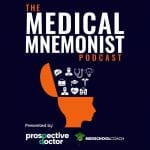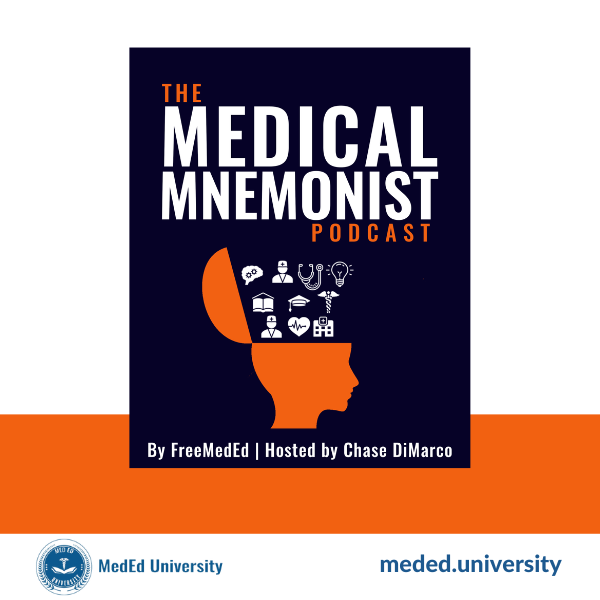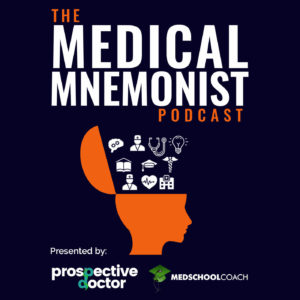Show Notes
Creative Study Tactics with Mind Maps is the third episode in a miniseries on medical mnemonics. In this episode, Chase DiMarco talks about mind maps and how its structure and visual elements improve long term retention.
Mind Maps
A mind map is similar to a concept map but the former diagram uses colors and themes to create stronger associations between topics. Mind maps can be attached to other mind maps, allowing you to zoom out to have a macro view of the associations or to zoom in to focus on specific topics. Think of a bubble chart that can continuously branch out to other bubble charts. You can also create multiple mind maps for a single subject. There are infinite ways on how to use mind maps. The structure can be organized in any way that you prefer.
The color schemes and images in a mind map facilitate better recall, which is its main difference from a concept map. Once you have decided on the organization of your mind map, you can add colors for each subcategory that branches out from the main subject. Colors will help you visually locate the different subcategories in your mind map. It creates a color-coded system for grouping information. Next, assign an image to each pathway. Use creative and personal symbols that will be meaningful to you. Visual markers improve long term memory. Each association ends up having a color and a unique image.
Mind maps can be created by hand or through a digital software. Don’t feel intimidated to make your own. To start, try creating a mind map for your grocery list or daily schedule. Proficiency in creating mind maps will increase with each new one you create.
Homework
- Create at least 1-3 mind maps
- After creating your mind maps, try to recall them without visual aid
Check out Mind Map Mastery by Tony Buzan. Listen to our previous episode with Barry Mapp for additional tips on how to create mind maps. For more study tips, grab a copy of Read This Before Medical School. Don’t forget to leave a rating!
Share your experiences, tips, and suggestions to medicalmnemonist@gmail.com. Or you can directly reach out to Chase on LinkedIn, Twitter, or Instagram. Join the Medical Mnemonist Master Mind Facebook group and find our Blog posts, Podcasts, and other Resources at MedEd.university









